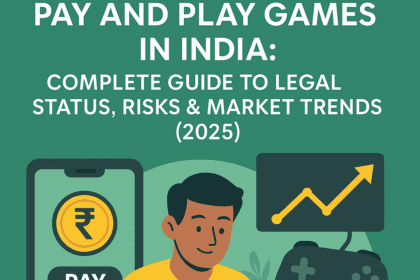
Namaste doston! Business karna India mein ek dum alag adventure hai—kabhi excitement, kabhi tension, aur kabhi toh dil bolta hai, “Bhai, yeh kyun shuru kiya?” Main bhi ek chhota sa business start kiya tha—handmade kurtas ka online store—aur socha tha ki passion aur mehnat se sab ho jayega. Lekin sach bolun toh, maine itne mistakes kiye ki ek time pe laga, “Bas ab band kar do!” Par har galti se maine kuch seekha, aur aaj wohi lessons aapke saath share kar raha hoon. Yeh hai meri kahani: 5 business mistakes jo maine kiye aur unse sikha.
Yeh blog thoda lamba hai—6000+ words—kyunki main chahta hoon ki aapko har detail mile, har tip mile, aur har galti se bachaane ka plan mile. Chai ya coffee le lo, aur chalo shuru karte hain!
Table of Contents
| Section | Topic |
|---|---|
| 1 | Intro: Galtiyaan Kyun Hain Best Teacher? |
| 2 | Mistake #1: Market Research Ko Ignore Kiya |
| 3 | Mistake #2: Cash Flow Ka Dhyan Nahi Rakha |
| 4 | Mistake #3: Jaldi Jaldi Hiring Kar Li |
| 5 | Mistake #4: Digital Marketing Ko Bhool Gaya |
| 6 | Mistake #5: Sab Kuch Khud Karne Ki Koshish |
| 7 | Bonus Gyan: Galtiyon Se Kaise Banao Opportunity |
| 8 | Conclusion: Ab Aapki Baari Hai! |
| 9 | About the Author: Vivek Ghai |
1. Intro: Galtiyaan Kyun Hain Best Teacher?
Doston, business mein galtiyaan toh banta hai. Chahe aap Mumbai mein startup chala rahe ho ya Delhi mein apne papa ka dhandha sambhal rahe ho, kabhi na kabhi toh galti hogi. Big names jaise Narayana Murthy ya Kiran Mazumdar-Shaw—unhone bhi mistakes kiye, par unki success ka raaz yeh tha ki unhone har galti se seekha.
Maine jab apna pehla business shuru kiya—ek online store jahan handmade kurtas bechta tha—mujhe laga ki bas dil se kaam karunga aur paisa apne aap aa jayega. Lekin bhai, reality check tab mila jab mera stock ruk gaya, paisa khatam ho gaya, aur confidence bhi down ho gaya. Par ek baat samajh aayi: galtiyaan failure nahi, lessons hain.
Is blog mein main aapko apne 5 bade business mistakes batane wala hoon—har ek ke saath pura detail, kya hua, kaise fix kiya, aur aap kaise avoid kar sakte ho. Yeh Indian market ke hisaab se likha hai—yahan ke competition, customers ki price-sensitive nature, aur fast-changing trends ke saath. Toh agar aap entrepreneur ho ya banna chahte ho, yeh post aapke liye hai. Chalo, pehli galti se shuru karte hain!
2. Mistake #1: Market Research Ko Ignore Kiya
Kya Hua?
Jab maine apna kurta business start kiya, mujhe laga ki meri designs sabko pasand aayengi. Colorful kurtas, heavy embroidery—main toh khud impress ho gaya tha! Lekin maine yeh nahi socha ki mera target audience—18-35 saal ki ladkiyaan—kya chahti hain. Maine festive kurtas ka stock bhar diya, par baad mein pata chala ki daily wear, simple cotton kurtas ki demand thi.
6 mahine baad, mera ₹2.5 lakh ka stock warehouse mein pada tha, aur bikne ka naam nahi le raha tha. Dil pe laath lagi, bhai! Maine socha tha ki Diwali ke season mein sab bik jayega, par customers toh casual wear ke peeche the. Yeh meri pehli badi galti thi—market ko samajhe bina business chala diya.
Seekha Kya?
Market research ko ignore karna matlab apne pair pe kulhadi marna. India mein har city, har age group, har season ka alag taste hai. Mumbai mein jo chalta hai, woh Lucknow mein shayad na chale. Yeh samajhna zaroori hai, warna paisa aur time dono waste.
Kaise Theek Kiya?
- Surveys: Maine doston, family, aur WhatsApp groups mein poochha ki unhe kya pasand hai. Ek simple message bheja, “Batao, kurtas mein kya dekhte ho?” Aur jawab aane lage.
- Competitors Dekhe: FabIndia aur Biba jaise brands ka study kiya—unke bestsellers kya hain, kaise bechte hain, unka pricing kaisa hai.
- Google Trends: Free tool se pata kiya ki “cotton kurtas” aur “minimalist ethnic wear” jaise keywords trend mein hain. Yeh mujhe samajh aaya ki log ab simple aur comfortable cheezein pasand karte hain.
Aapke Liye Tips
| Step | Kaise Karein | Tool/Resource |
|---|---|---|
| 1 | Audience ko jaano | WhatsApp polls, Instagram stories |
| 2 | Competitors check karo | Unki website, X posts |
| 3 | Trends dekho | Google Trends |
Pro Tip: Kabhi mat socho ki “mujhe pata hai.” Ek simple Instagram poll se lakhs bacha sakte ho.
Aur Ek Baat: Maine ek baar X pe ek post dekha jahan ek entrepreneur ne bataya ki usne apne product launch se pehle 100 logon se feedback liya—aur uska launch hit ho gaya. Yeh idea mujhe bhi try karna chahiye tha! Agar maine pehle yeh kiya hota, toh shayad mera stock waste na hota.
Extra Gyan: India mein seasonal demand bhi dekhni padti hai. Jaise, monsoon mein light fabrics chalte hain, jabki winters mein heavy embroidery ki demand badh jati hai. Yeh cheez main miss kar gaya tha—ab nahi karta!
3. Mistake #2: Cash Flow Ka Dhyan Nahi Rakha
Kya Hua?
Cash flow ko maine seriously nahi liya. Mujhe laga, “Orders aa rahe hain, paisa toh apne aap manage ho jayega.” Maine branding pe kharcha kiya—fancy logo banwaya, ekdum jhakaas website banayi, aur ads pe paisa lagaya—par yeh nahi dekha ki kitna paisa andar aa raha hai aur kitna bahar ja raha hai.
8 mahine baad, suppliers ko payment nahi de saka, aur business almost band hone ki kagaar pe aa gaya. Ek supplier ne toh phone pe bola, “Bhai, paisa nahi doge toh agla order nahi bhejenge.” Tab mujhe samajh aaya ki main kitni badi galti kar chuka tha. India mein chhote businesses ke liye yeh badi problem hai—margin kam hota hai, aur cash flow tight rehta hai.
Mera ek bulk order aaya tha ₹1 lakh ka, par payment 60 din baad aani thi. Us waqt mere paas suppliers ko dene ke liye paisa nahi tha. Yeh meri doosri badi galti thi—cash flow ka hisaab nahi rakha.
Seekha Kya?
Cash flow matlab sirf profit nahi—timing bhi matter karta hai. Agar aapke paas ₹5 lakh ke orders hain, par bank mein paisa nahi jab bill dena ho, toh game over. India mein toh yeh aur bhi zaroori hai kyuki yahan suppliers aur vendors cash pe hi kaam karte hain.
Kaise Theek Kiya?
- Budgeting: Ek simple Excel sheet banaya jisme daily income aur expense track karta tha. Har din shaam ko 10 minute baith ke dekhta tha ki kya kharcha hua, kya aaya.
- Payment Terms: Suppliers se 30 din ka credit liya, pehle sab advance deta tha. Unse baat ki, “Bhai thoda time do, regular customer hoon.” Woh maan gaye.
- Emergency Fund: Har sale ka 10% alag rakha taaki mushkil time mein kaam aaye. Yeh fund ne mujhe ek baar supplier ka bill clear karne mein bahut help ki.
Aapke Liye Tips
| Problem | Solution | Example |
|---|---|---|
| Zyada kharcha | Free tools use karo | Tally ya Excel |
| Late payments | Reminder set karo | Google Calendar ya phone alarm |
| No backup | Savings automate karo | GPay ya bank app |
Pro Tip: Har hafta cash flow check karo. Boring hai, par zaroori hai.
Real Story: Ek baar maine ek dost se suna ki uska D2C startup isi wajah se band ho gaya—cash flow ka mess. Usne bola, “Bhai, ek app download kar leta toh shayad bach jata.” Maine tab se apne phone mein reminders set karne shuru kar diye.
Extra Gyan: India mein GST aur taxes bhi cash flow pe asar daalte hain. Har mahine tax ke liye thoda paisa alag rakho, warna last minute tension ho jati hai. Yeh maine bhi seekha jab mujhe ek baar penalty deni padi thi.
4. Mistake #3: Jaldi Jaldi Hiring Kar Li
Kya Hua?
Jab orders aane lage, mujhe laga ki ab team banani chahiye. Maine jaldi mein teen log hire kar liye—ek designer, ek marketer, aur ek packer. Socha tha ki yeh teeno kaam jaldi kar denge. Lekin designer toh theek tha, marketer ko Instagram ads ka ‘I’ bhi nahi pata tha, aur packer aadha din khali baitha rehta tha.
Salary dene ke liye mera budget khatam ho gaya. Ek mahine mein ₹50,000 salary pe chala gaya, par business mein growth nahi hua. Maine socha tha ki team se kaam fast hoga, par ulta loss ho gaya. Yeh meri teesri galti thi—jaldi mein galat hiring.
Seekha Kya?
Hiring ek investment hai, jaldi ka kaam nahi. India mein talent toh bahut hai, par skills check karna zaroori hai, warna paisa barbad. Ek galat hire aapke business ko peeche le ja sakta hai.
Kaise Theek Kiya?
- Freelancers: Maine Upwork se part-time log hire kiye. Ek graphic designer ko ₹1000 mein logo banaya, jo full-time wale se better tha.
- Skill Test: Chhote tasks deke candidates ko check kiya. Marketer se bola, “Ek ad campaign idea do,” aur uska jawab dekha.
- Slow Scaling: Jab tak revenue double nahi hua, permanent hiring nahi ki. Pehle freelancers aur interns se kaam chalaya.
Aapke Liye Tips
| Hiring Stage | Tip | Platform |
|---|---|---|
| Sourcing | Local job boards try karo | Naukri.com |
| Testing | Mini tasks do | Google Docs ya email |
| Scaling | Interns se shuru karo | Internshala |
Pro Tip: Jab tak teen mahine ki salary afford na kar sako, hire mat karo.
Fun Fact: Ek X user ne share kiya ki usne galti se ek overpaid employee rakha, aur 6 mahine mein uska startup crash kar gaya. Lesson: Quality over quantity! Maine bhi yeh seekha ki pehle chhota start karo, baad mein bada socho.
Extra Gyan: India mein interns ek dum sasta aur effective option hain. College students ko ₹5000 mahine mein hire karo, aur woh dil se kaam karte hain. Yeh trick maine baad mein seekhi, warna pehle hi try karta.
5. Mistake #4: Digital Marketing Ko Bhool Gaya
Kya Hua?
Mujhe laga ki word-of-mouth hi kaafi hai. Meri kurtas unique thi, cousins ne tareef ki, toh maine socha ki customers apne aap aa jayenge. Lekin bhai, India mein 1.4 billion log hain—sirf family ke bharose kaise chalega? Meri website pe mahine mein 10 visitors aate the, aur Instagram pe 50 followers the—woh bhi zyaadatar bots!
Ek baar ek customer ne WhatsApp pe poochha, “Aapka online store kahan hai?” Tab mujhe laga ki main digital marketing ke bina kitna peeche reh gaya hoon. Yeh meri chauthi galti thi—online presence ko ignore kiya.
Seekha Kya?
India ab digital-first hai. 600 million+ internet users ke saath, online marketing ko ignore nahi kar sakte. Aaj kal toh Tier-2 cities jaise Jaipur, Patna, aur Lucknow mein bhi log online shopping karte hain.
Kaise Theek Kiya?
- Social Media: Instagram Reels pe daily post karna shuru kiya—kurtas ke looks dikhaye, styling tips diye. Ek Reel viral hua aur 5000 views aaye!
- SEO: Website pe keywords daale jaise “buy kurtas online India” aur “affordable ethnic wear.” Thodi mehnat ke baad Google pe rank aane laga.
- Ads: Chhote budget ke Facebook ads chalaye, Tier-2 cities ko target kiya. ₹500 din ke ad se 10 orders aaye—paisa vasool!
Aapke Liye Tips
| Channel | Strategy | Cost |
|---|---|---|
| Reels + hashtags use karo | Free | |
| Basic SEO seekho | Ubersuggest | |
| Ads | ₹500/day se shuru karo | Meta Ads |
Pro Tip: Ek platform pe focus karo pehle—master karo, phir expand karo.
Real Example: Ek baar maine X pe dekha ki ek D2C brand ne Reels se 10,000 followers banaye 2 mahine mein. Yeh idea mujhe pehle kyun nahi aaya? Ab main har hafte 2-3 Reels daalta hoon.
Extra Gyan: India mein WhatsApp marketing bhi bahut kaam karta hai. Ek simple “New Collection” message 100 logon ko bhejo, aur 5-10 orders pakke. Yeh maine recently try kiya aur results dekha.
6. Mistake #5: Sab Kuch Khud Karne Ki Koshish
Kya Hua?
Main tha designer, accountant, marketer, aur delivery boy—ek dum superhero mode mein! Lekin yeh heroism tab tak chala jab tak main burn out nahi ho gaya. Orders late hone lage, customers WhatsApp pe complain karne lage, “Bhai, shipment kahan hai?” Ek bada order ₹50,000 ka miss ho gaya kyuki main time pe deliver nahi kar paya.
Ek din raat ke 2 baje tak kaam kiya, phir subah utha aur socha, “Yeh toh galat hai.” Yeh meri fifth galti thi—sab kuch khud karne ki koshish.
Seekha Kya?
Delegation is power. India mein affordable help mil jati hai—tailors, couriers, freelancers—phir bhi maine khud sab karne ki thaan li thi. Yeh meri sabse badi galti thi.
Kaise Theek Kiya?
- Outsourcing: Local tailor ko stitching di, aur courier service hire kiya deliveries ke liye. Ek order pe ₹50 kharcha, par time bacha.
- Tools: Canva se designs banane shuru kiye—Photoshop mein ghanton tak nahi lada.
- Teamwork: Apne cousin ko customer queries handle karne ke liye bola. Usne bola, “Bhai, mujhe toh mazaa aa raha hai!”
Aapke Liye Tips
| Task | Delegate To | Cost |
|---|---|---|
| Design | Freelancers | ₹500/project |
| Delivery | Local couriers | ₹50/order |
| Queries | Family/friends | Free |
Pro Tip: Repetitive tasks automate karo—jaise Trello ya Zapier use karo.
Real Story: Ek baar X pe ek entrepreneur ne bola ki usne apne business ka 50% kaam outsource kiya, aur profit triple ho gaya. Maine bhi yeh try kiya—ab zindagi thodi easy hai!
Extra Gyan: India mein family ko involve karna bhi smart move hai. Mere cousin ne customer support sambhala, aur ek bhi paisa nahi liya—bas ek plate biryani maangi!
7. Bonus Gyan: Galtiyon Se Kaise Banao Opportunity
Galtiyaan dil todti hain, par agar unhe samjho toh goldmine hain. Yeh raha mera bonus gyan:
- Document Karo: Ek “Mistake Diary” rakho—har galti likho, kya hua, kyun hua, kaise fix karna hai.
- Feedback Lo: Customers aur employees se poochho ki kya galat hai. Ek customer ne mujhe bola, “Shipping slow hai,” aur maine uspe kaam kiya.
- Updated Raho: Indian business blogs jaise YourStory padho—trends pata chalenge.
Fun Fact: Flipkart ke founders ne bhi pehle delivery mistakes kiye, par usse seekh ke logistics revolution bana diya. Galti se seekho, aur jeeto!
Extra Gyan: Har galti ke baad ek chhoti si jeet dhoondho. Jaise, mera stock waste hua, par usse maine clearance sale kiya aur ₹50,000 recover kar liya. Yeh chhoti wins confidence dete hain.
8. Conclusion: Ab Aapki Baari Hai!
Doston, India mein business karna asaan nahi—GST ka jhanjhat, Amazon jaise giants se competition, aur unpredictable market. Par meri galtiyon ne mujhe yeh seekhaya: market research karo, cash flow sambhalo, hiring smartly karo, digital marketing pe dhyan do, aur delegation ko apnao.
Agar main ₹2.5 lakh ka loss se recover kar sakta hoon aur profitable business bana sakta hoon, toh aap bhi kar sakte ho. Chhota shuru karo, jaldi seekho, aur failure se mat daro—yeh aapka best teacher hai. Ab aapka next step kya hai? Niche comment karo ya X pe mujhse connect karo—mujhe aapki kahani sunna hai!
About the Author:
Vivek Ghai is a Delhi-based entrepreneur and the founder of a thriving online store specializing in handmade kurtas. With over five years of experience in the business world, Vivek embarked on his entrepreneurial journey driven by a passion to transform his love for traditional Indian craftsmanship into a sustainable venture. His path hasn’t been without challenges—mistakes, financial setbacks, and lessons learned the hard way have shaped him into the resilient business owner he is today.

![[Guaranteed] 101 PROVEN Strategies To CREATE Money Online [LIMITED EDITION]](https://trendpaisa.com/wp-content/uploads/2025/03/WhatsApp-Image-2025-03-03-at-8.53.22-PM-300x300.jpeg)


